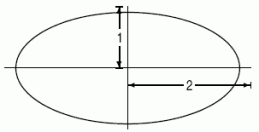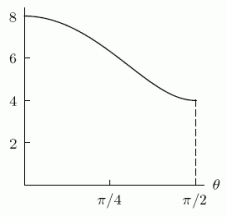Short Answer
Consider the ellipse pictured below:  The perimeter of the ellipse is given by the integral .It turns out that there is no elementary antiderivative for the function , and so the integral must be evaluated numerically.A graph of the integrand f( )is shown below.
The perimeter of the ellipse is given by the integral .It turns out that there is no elementary antiderivative for the function , and so the integral must be evaluated numerically.A graph of the integrand f( )is shown below.  Calculate the right sum that approximates the definite integral with N = 4 equal divisions of the interval.Round to 4 decimal places.
Calculate the right sum that approximates the definite integral with N = 4 equal divisions of the interval.Round to 4 decimal places.
Correct Answer:

Verified
Correct Answer:
Verified
Q14: <span class="ql-formula" data-value="\int \frac{e^{x}}{1+e^{2 x}} d x=\frac{1}{2}
Q15: Evaluate exactly: <span class="ql-formula" data-value="\int_{x
Q16: Evaluate <span class="ql-formula" data-value="\int_{0}^{1 /
Q17: Consider the integral <span class="ql-formula"
Q18: Find <span class="ql-formula" data-value="\int\left(\frac{1}{x+1}-\frac{1}{(x+1)^{2}}\right) d
Q20: <span class="ql-formula" data-value="\int(1+x) \sin (4 x) d
Q21: Calculate the area between the curve
Q22: Evaluate exactly: <span class="ql-formula" data-value="\int_{x
Q23: If <span class="ql-formula" data-value="\int_{0}^{2} \frac{d
Q24: Compute <span class="ql-formula" data-value="\int_{0}^{3} x